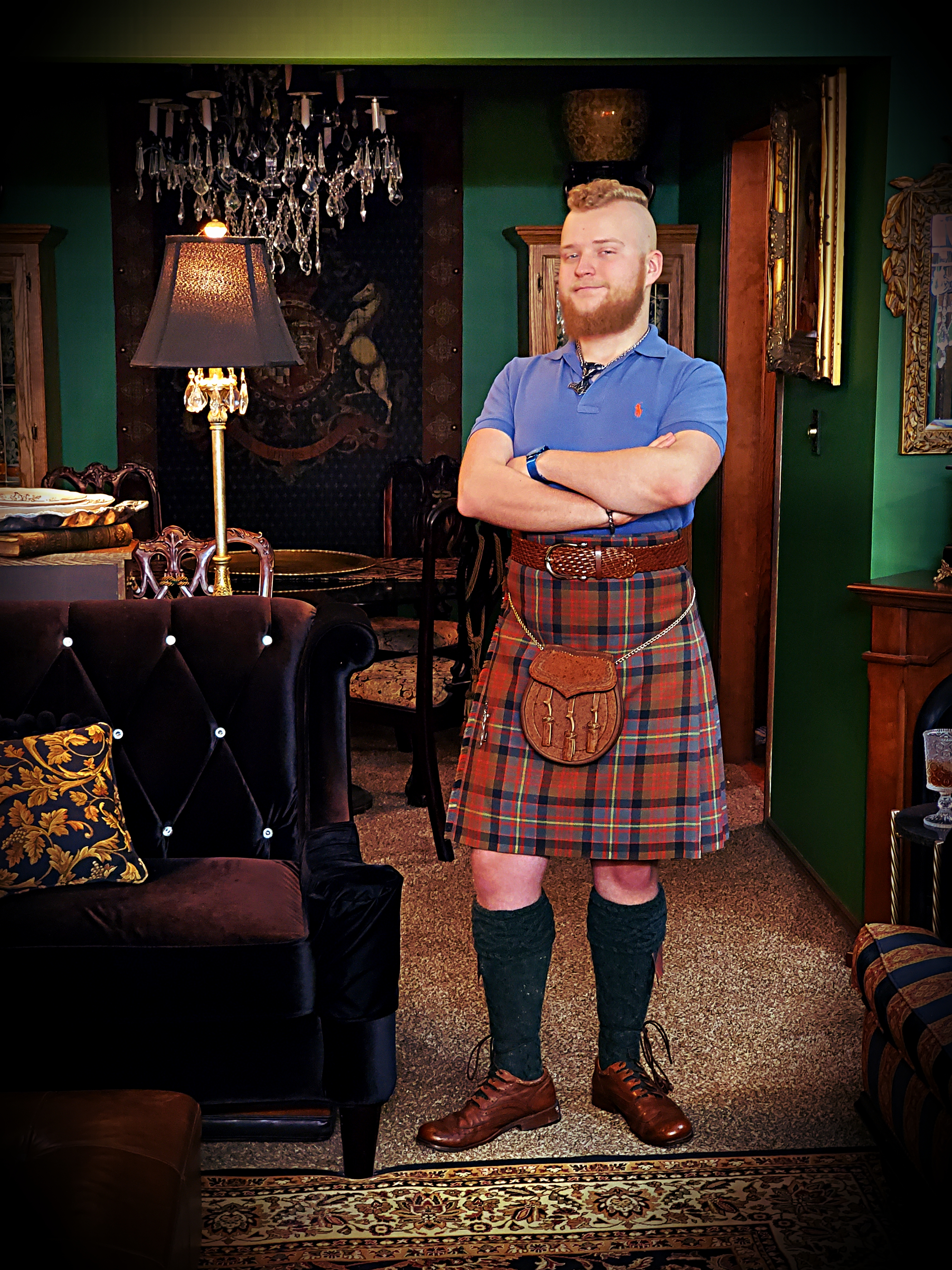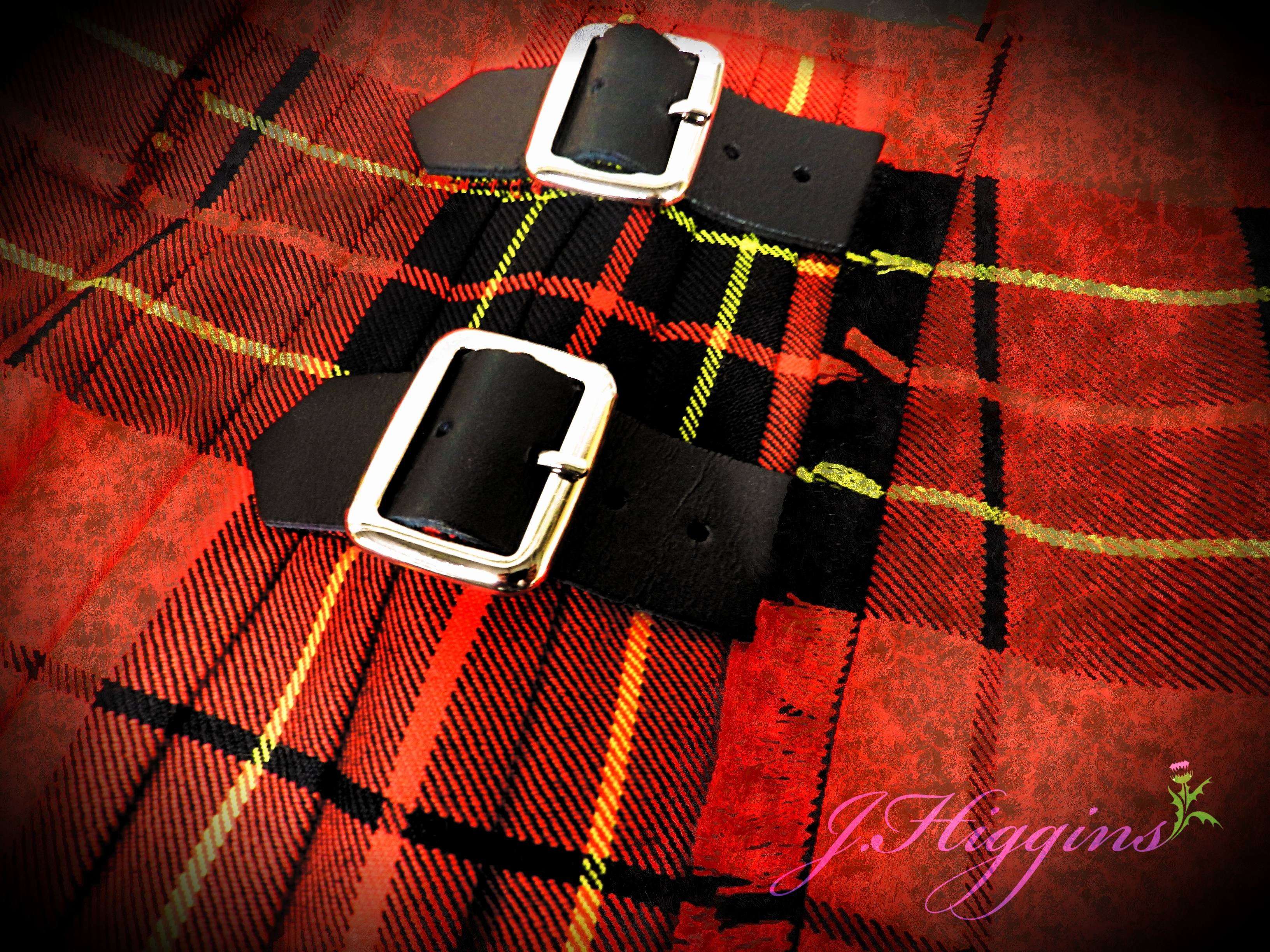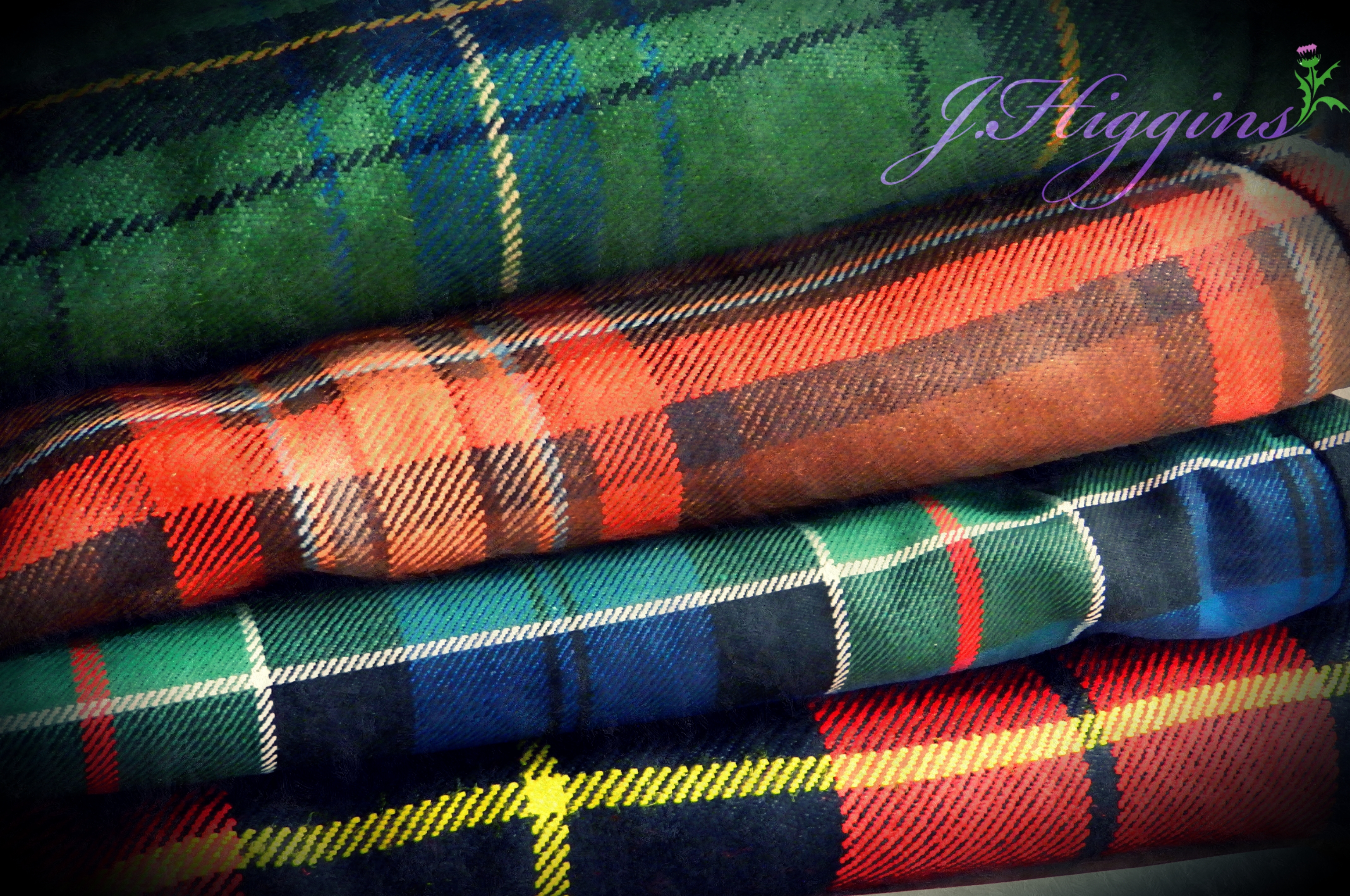Caring for Your J. Higgins Kilt
Posted by Griffin Hall on 10th Aug 2020

After getting your new kilt from J. Higgins, there are a few things you'll need to know about how to care for this custom garment. Your kilt should last well beyond your years, and we do our best to ensure your investment lasts. Follow these steps on maintaining your own kilt.
1. Receiving your Kilt:
After unpacking your kilt, you should immediately hang it up. Use a pants hanger with pinching clips to secure the kilt. You can also acquire 4 clip hangers that take up the slack in the middle of the kilt. Position the clips so that the front apron is flat across. The pleated back of the kilt can be slightly wavy as the pleats will fall out once on the body of the wearer. You may find that the kilt is slightly wrinkled upon unpacking. This is perfectly normal and virtually impossible to avoid. The best thing to do is to let it hang undisturbed and allow the wrinkles to naturally fall out.
2. Putting it on:

Being a custom garment, your kilt is designed to fit wherever your waist measurement has been taken from. The inside apron goes on first, buckling on your left. And then the front apron, which has two buckles on your right. You shouldn't have to pull the straps extremely tight, just enough so that it is comfortable to wear. Try taking in some deep breaths and experiment on which hole is the most comfortable for your stomach. It is always a good idea to check in the mirror once or twice. The kilt should be level all the way around your body, both on the waist and around your legs. The front apron should hang evenly across your front and the pleats should be evenly spaced in the back. You should see a fair amount of knee in between your hose and kilt (like the picture shown above). Making sure the kilt is worn properly and comfortably will ensure it's longevity.
3. Sitting Down:

Everyone at some point must sit in their kilt. Unfortunately, this action is one of the quickest ways to undo a handsomely dressed highlander. Prolonged and incorrect sitting will wrinkle and disturb the pleats, which is a hard action to undo. However, there is a proper way to sit that won't wrinkle the material or unfold the pleats. Before sitting, take your hands and smooth the rear of the kilt down so the beginning of the pleats are as straight as they can be. You'll want the back of the kilt to follow your legs out underneath you. Don't allow the pleats to sit in a mess of wrinkled tartan behind you. Especially when driving, you'll need to check and be sure that the pleats follow straight through the long length of the seat. As for your legs, you need to allow the kilt apron to hang down in-between your legs. This is the best way to keep that front apron straight, and also preserves your modesty.
4. Kilt Pins:
These decorative pins look great on any kilt. Many will say that the function of the kilt pin is to hold down the front apron of the kilt. While it'll certainly help with this, its function is rather more of a decorative piece. When pushing the pin into the kilt, take care to ensure the pin goes straight in and not at an angle. Don't push the pin into the 2nd apron as this won't allow the kilt to move when you walk. Your pin should only have 1 layer of tartan to cling to. The pin should sit on the right side of the wearer and only a couple inches or so from the edge of the fringe. The kilt pin should always sit just under level with the middle of the sporran and shouldn't sit too high or too low on the kilt. Try to make sure the pin is centered in the pattern of the tartan. Always take your pin off after finishing with your kilt. Leaving it in will undoubtedly snag on things and will tear holes into your tartan.
5. Removing a Stain & Cleaning:
Unfortunately, it has been known to happen at many a Burns dinner, when a glass of sherry gets spilled on the precious tartan of a kilt. The best thing to do in this instance is to use a warm and wet cloth and dab the stained area. You can use slightly soapy water as well, but avoid using products with bleach as this will discolor the tartan even more. Never scrub the cloth of a kilt as this will take away strands from the wool and wear into a bare spot over time.
We get lots of questions regarding the cleaning of a kilt. Generally, we say "'dry-clean only", but I've heard some horror stories of people coming back from the cleaners with an unwearable kilt. Most places won't even take the kilt if they know that there is leather/metal used in the buckles and straps. You should be sure they know how to work with "worsted wool" which is the specific type of wool used in kilt making. Even then, I generally don't trust the use of dry cleaners to take care of your heirloom kilt.
Personally, I use spray-on fabric softener available at most grocery stores. It is not abrasive, usually bleach free, and gives a fresh scent to the inside of your kilt. Hanging up after having been sprayed, your kilt should remain plenty fresh and ready for your next outing.
6. Ironing a Kilt:

This is a process that many take for granted. Kilts are not like a normal pair of dress pants and cannot have the iron placed on the fabric. Never touch the iron to a kilt! Not only because of the wrinkles, but many irons will leave a sheen on the wool which you cannot undo. When you iron a kilt, you are simply using the steam of the iron to smooth the pleats, never pressing into the tartan as you'll develop unshakeable creases. Avoid using an ironing board as well, since the entire garment can never be flat as its being ironed. A flat bed top, or even the floor works great. Lay the kilt totally flat and only steam the fabric. When steaming the pleats, start from the top and work your way slowly down. Again, not pressing into the pleats. Making these pleats totally flat will prevent them from moving smoothly when you walk. Personally, I've never had to steam my kilt. If I ever find it needs care, I simply lay it on the floor (fully folded) the night before I plan to wear it.
7. Travelling with your Kilt:
The kilt is a versatile garment that finds itself into many different kinds of events. When travelling with your kilt, there are two options that are the best for transport.
Hanging:
Simply the best for traveling in the car. Store your kilt in a garment bag with any other accessories and let it remain upright throughout the trip!
Inside a Suitcase:
Certainly a tricky situation, but it can be done. You'll want the kilt to lay on the bottom of the case with the pleats laying lengthwise. You can fold the kilt lengthwise if you must, but ensure that the pleats are on the inside of the fold. If your suitcase isn't long enough, you can bend the waist section up along the side wall of the case to let the pleats remain untouched along the bottom. Pack as much as you can into the case to prevent the kilt from sliding around and bunching up.
Having arrived at your destination, it is a good idea to immediately take the kilt out, and lay it flat on the floor with the most wrinkled side facing down.
8. Storing your Kilt:

Your kilt will spend most of it's time in storage, so it is very important to store it properly. Hanging is always the best method. Allow the belts to remain outside of the buckle as to not wear on the leather and to keep the form of the kilt as free as possible. Keep your kilt in a garment bag with moth balls inside. This is great for multiple kilts as well as whole uniforms. Being a wool garment, you should take care that the material is not sitting in an overly damp closet or bathroom as this can discolor and disfigure the kilt.
9. When do I need my Kilt repaired?:
Your J Higgins kilt is meant to last, but with every well-worn garment, the occasional repair is a likely encounter. We find that we have to replace the belts and buckles on kilts most of all. This is where the tension is often greatest and where the kilt is commonly moved. We'd recommend an annual glance over your kilt for rips, tears, and general upkeep that needs to take place. We can also alter a kilt to fit new measurements. There are some limitations to how much we can let out a kilt, but there are virtually none when it comes to smaller sizes. For more information, visit our alterations page: https://www.jhiggins.net/we-can-alter-your-kilt
Final Words:
The wearing of the kilt is more than just wearing a garment. It is the sacred and ancient preservation of one's family heritage and the continuation of Scottish tradition through the ages. Keeping the integrity of a well maintained kilt will ensure that you look your best and that you carry a good image for the art of highland dress.
Feel free to get in touch with us about any questions or comments!
- Call us on 800-426-7268
- Email us at: admin@jhiggins.net

